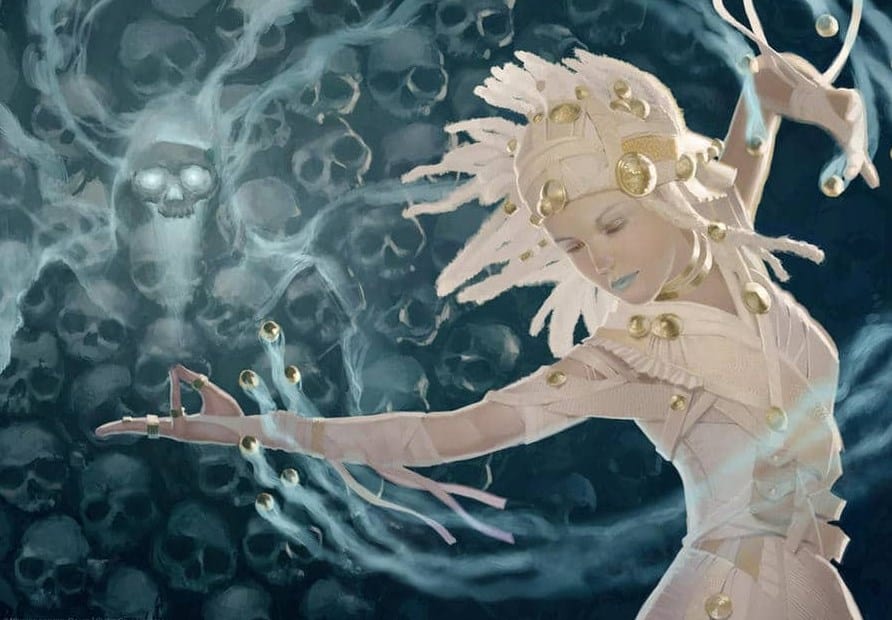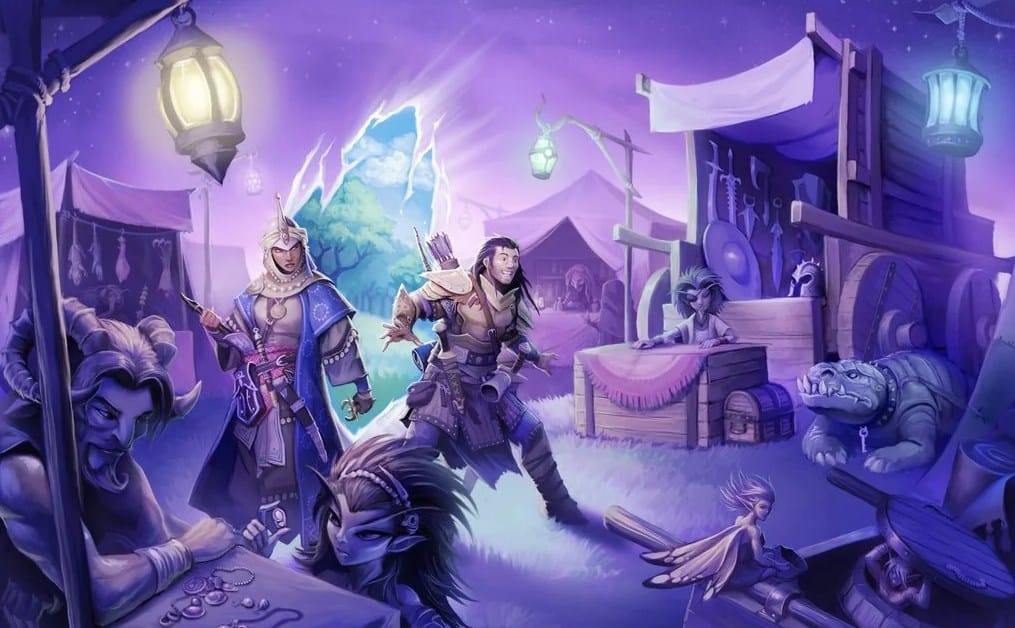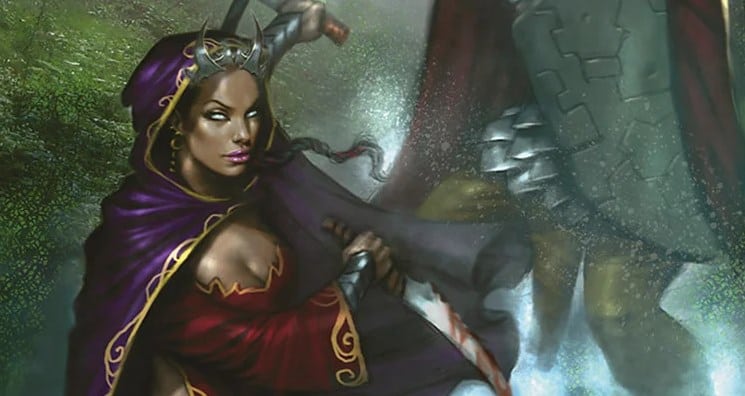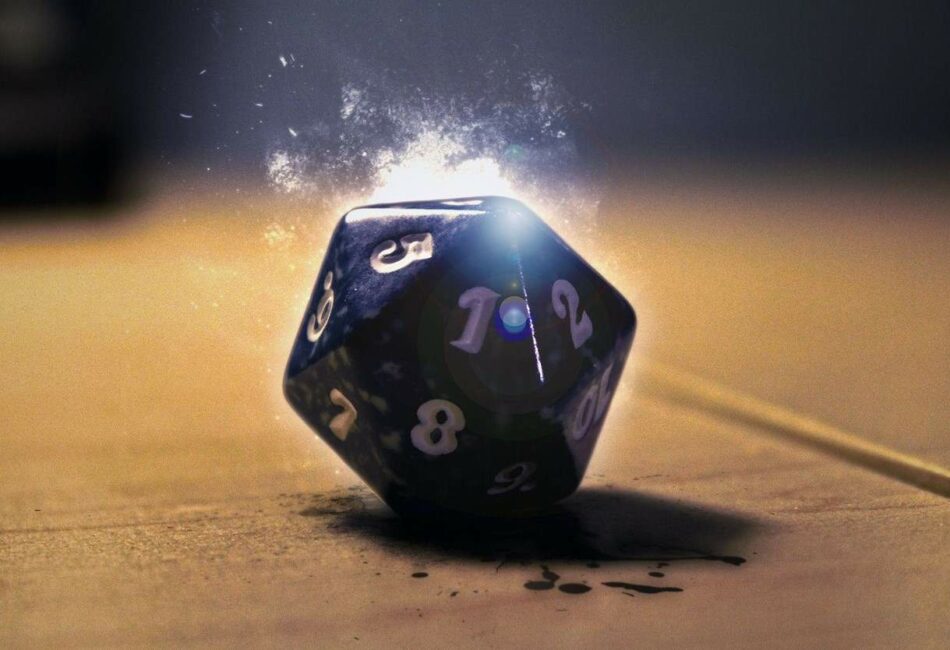One of the best things that players look forward to whenever it comes to new D&D books or supplements is the new classes that people can start to play with. In the book ‘Races of The Eberron’, the Kalashatar were introduced and have been stealing hearts with their unique lore and backstory ever since.
But what classes are best with a Kalashtar? How do you roleplay one effectively? What makes them so fun? Here’s our Kalashtar 5e Guide, and soon you will be able to figure out what makes them the best choice for your D&D campaign.
What Is A Kalashtar?
The lore is a bit complicated but in simpler terms, they are humanoids bound to the Plane of Dreams. They have a dream spirit called a quori living inside of them, and that spirit helps to bolster their mind against psionic attacks and occasionally gives clues as to things they want their host to do. They cannot speak to their host outside of bright lights appearing around objects they want their hosts to investigate.
The quote cannot live outside of the plane of dreams without a mortal mind, hence the merging with the Kalashtar. There are two factions of the quori who exist in Eberron, with the first being those who merge with Kalashtars in the mortal plane as the Path of Light. Other, more sinister quori live within the dreaming dark and seek only to destroy.
What Are Kalashtar Like?
Most Kalashtar is raised in the mountains as monks, taught to control their emotions and their latent psionic capabilities. If they do lose their measured facade, the spirit within them can cause their eyes to glow as they tap into their psionic power. While the spirit will never talk to their host, they can have the same goals and motivations or can be vastly different in their approach to things.
Most Kalashtar looks vaguely elven or half-elven in their appearance, so they sometimes adopt these races whenever working with other adventurers.
How Does Kalashtar Work With Stats?

Here are some of the benefits that Kalastar has whenever you play as them, all from the Races of the Ebberon Book.
- Dual Mind: You have an advantage on all Wisdom saving throws.
- Alignment: The noble spirit tied to a kalashtar drives it toward lawful and good behavior. Most kalashtar combine strong self-discipline with compassion for all beings, but some kalashtar resist the virtuous influence of their spirit.
- Mental Discipline: As a psychic warrior, you have resistance to psychic damage.
You also gain two new abilities that are very active when it comes to how you play the game. The first is Mind Link: You can speak telepathically to any creature you can see, provided the creature is within a number of feet of you equal to 10 times your level. You don’t need to share a language with the creature for it to understand your telepathic utterances, but the creature must be able to understand at least one language.
When you’re using this trait to speak telepathically to a creature, you can use your action to give that creature the ability to speak telepathically with you for 1 hour or until you end this effect as an action. To use this ability, the creature must be able to see you and must be within this trait’s range. You can give this ability to only one creature at a time; giving it to a creature takes it away from another creature who has it.
With this ability, you can start speaking telepathically to any creature you can see, regardless of the language differences. They can also speak back to you if you give them the ability to. That right there has a lot of potentials to change how you play, as telepathy is a very interesting skill.
There’s also the Severed from Dreams ability: Kalashtar sleep, but they don’t connect to the plane of dreams as other creatures do. Instead, their minds draw from the memories of their otherworldly spirit while they sleep. As such, you are immune to spells and other magical effects that require you to dream, like dream, but not to spells and other magical effects that put you to sleep, like sleep.
The cool part here for DM’s who like to roleplay is the fact that the Kalashtar dream of the memories of the quori spirit inside of them. You can easily explain your character’s dreams as they sleep, giving them more insight into their spirit.
What Classes Are Best For A Kalastar?

The Wisdom bonus from their ability scores makes them very good monks, and it ties into the lore nicely as most Kalastar were raised as monks. Clerics and Druids are also good options too, due to the advantage of wisdom saving throws. This is perfect for a druid who loves to be in Wild Shape most of the time, as they replace the animal’s low wisdom score with their own.
Most Kalastars are designed to be casters, but a melee-only Monk build can be viable if you put a lot of points into dexterity. The main advantage of being a Kalasthar that you need to take into account is the high boost to the wisdom you get and the advantage to all wisdom saving throws. Being able to stand firm even when fear spells, dissonant whispers, suggestion spells, and other debuffs are flying around allows you to cast spells of your own.
How Do You Make A Kalastar Interesting?
One of the things you can do is play up the Kalastar’s Psionic capabilities. Maybe the players encounter mind flayers or a vampire who manages to get inside the Kalashtar’s head, and the Kalastar gets some psionic abilities as a result. Simple things like a psionic blast or telekinesis can be complex enough to be fun to use, but also not powerful enough to break the game.
You can also take a look at the Psi Warrior class introduced in Tasha’s Cauldron of Everything. They get psionic energy dice at level three, all d6’s, and can use them to create psychic shields, increase the damage of weapons, and perform limited telekinesis. Once they get to the fifth level the dice increase to a d8.
Level 7 gives the Telekinetic adept ability, which allows the Psi warrior to propel themselves with their minds and gain a flying speed. They can also gain the ability to knock people back with their psionic weapon strikes. There are some more skills, but you get the picture. Since Kalestar has latent psychic abilities within them, you can go full Psi Warrior or subclass them with Monk or caster abilities.
Roleplay the Spirit
The quori spirit might have goals and desires of its own and has decided to use the Kalastar as a body to do them. It might decide to point things out to its host by coating certain objects in shaped light, but it’s up to the Kalesthar to figure out what to do with it. The spirit could even influence the Kalesthar’s emotions whenever danger is near, giving them a second sense of when trouble is near.
Of course, the spirit won’t be able to outwardly communicate with the Kalastar, so you will need to be indirect. It could even be interesting if your Kalstar and spirit had different views on the world, creating a bit of inner conflict between the two.
Finally, if your Kalashtar is embracing the psionic part of their mind, maybe it manifests in their actions. For example, a wisdom saving throw has the two minds of the Kalashtar and the Quori working together. Maybe an ethereal shield appears before the character whenever they resist a mind-altering effect.
Or the player could describe how their spirit gets their attention (such as covering objects in a dull blue light) and that gets incorporated into their psi attacks as they combine their power with the quori. So any psi shields, weapons, or powers would leave a dull blue color with them. It’s mostly for flavor, but it can be fun if your player wants to lean in that direction.
Start Incorporating The Dreaming Dark

Playing with the character’s backgrounds is always a great way to bring everyone into the story. For Quori spirits, existed in the dreaming dark plane of Dal Quor, and invaded the world, only being stopped and exiled by a combination of dragons and giants. The evil quori bided their time while a group of 67 good quori escaped the plane.
These 67 quori merged with human monks and eventually became the first Kalashtar. Then these monks learned to work with the spirit within them, bred, and also looked for other orphan Kalashtar to train and bring in from the often chaotic streets.
Meanwhile, the evil quori began invading and controlling humans through their dreams, manipulating and motivating chaos. After a while, they began using these hosts as empty husks, taking them over and using them to attempt to reopen the portal between Dal Quor and the material plane. This organization is called the Dreaming Dark.
You could easily have them be a minor or major antagonist of a quest or campaign, reminding your Kalastar and the other party members of their evil. It’s not too hard to mix some evil quori into a campaign or to homebrew a quest where the dreaming dark is scheming to open a portal.
Kalashtar FAQs:
Question: Are Kalashtar’s Empaths?
Answer: While most Kalashtar is very compassionate, empathic, and really like to meet new people, it’s unclear whether they are empaths in the truest sense of the word. However, since the lore does state that they need to spend a lot of time controlling their emotions since that can lead to psychic backlash if they don’t, you can roleplay them as such.
Maybe your Kalshtar will need to meditate or otherwise use tools to avoid emotional situations or might seek to be a peacemaker or diplomat to calm everyone down. You can even have them lose control for a while and make more psi attacks than they are used to. It’s up to the player and the DM for what they want to do, but it will be fun no matter what.
Question: Can I Homebrew the Kalashtar?
Answer: Some players and DM’s love the Kalashtar and all they bring to the game, but either don’t have a game in the Eberron setting or don’t want to bring all the complexity into their games. If so, the Kalasthar can be homebrewed or changed into anything you like. The quori spirit could be just a general spirit, and the evil spirits could be demons or another dark organization. After all, there are dozens of cults in D&D.
You can easily create your own story that keeps all the interesting qualities of the Kalashtar but also has the flexibility to be adapted into your own campaign. Just work with your DM and you’ll get something interesting.
Question: Can You Find Quori Without Hosts?
Answer: Yes, whether you go into the Plane of Dreams or through some other magic, the evil quori can sometimes take matters into their own hands and appear physically. They do have stat blocks and are very tough creatures. Some of the abilities they have include immunity to being surprised, innate spellcasting, incorporeal movement, and even the ability to possess other creatures.
If you do find one outside of a host, you are in for a very tough fight as they are psionic creatures and will cause a lot of damage to those with low wisdom saving throw scores. Additionally, several of the quori’s abilities trap the souls of dead creatures inside of its eyes, and nothing short of a wish spell can revive them.
Again, most quori will remain inside their human host for combat, and will very rarely enter combat themselves. Still, if your players need a tough boss battle to end the scheme of the Dreaming Dark for good, this can be a good one.
- DnD Demons Guide: What Are Demons in 5e? - September 18, 2021
- Detect Thoughts 5e Guide: When, Why and How to Use It - September 9, 2021
- The Ultimate DnD Toll the Dead 5e Guide - September 9, 2021

